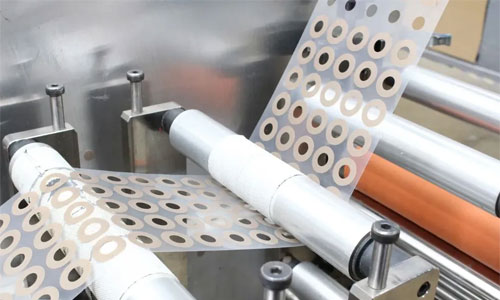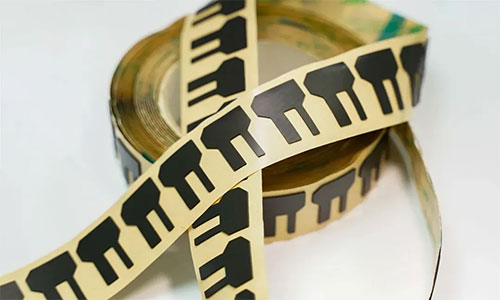With the explosive growth of wearable devices, flexible displays, and smart devices, the demand for flexible printed circuit (FPC) boards has greatly increased. The industry is being widely applied as electronic products pursue light, thin, short, and small designs. Ultra-thin and stretchable FPCs hold tremendous opportunities and promote further development of related devices.

FPC is a highly reliable and flexible printed circuit board made from polyimide or polyester film as the base material. It has high wiring density, light weight, thin thickness, and good bending flexibility. FPCs can greatly reduce the volume of electronic products and meet the needs of high-density, miniaturized, and highly reliable electronic products. Therefore, FPCs have been widely used in aerospace, mobile communications, laptops, computer peripherals, PDAs, digital cameras, and other fields or products.
The production process of FPCs is complex, requiring more than 20 steps from material cutting and drilling to packaging and shipping. Additionally, various auxiliary materials are used according to customer requirements.
The substrate of FPC is generally double-sided or single-sided copper foil, which is the foundation of the entire FPC. The electrical performance of the FPC is determined by the substrate. Other auxiliary materials are only used to assist installation and adapt to the usage environment.

Non-metallic die cutting materials mainly include the following:
1. FR-4 grade material: It comes in different thicknesses from 0.15-2.0mm and different materials. It is mainly used on the backside of FPC solder joints to enhance the flexibility of the circuit board and facilitate soldering. FR-4 is a grade designation for flame-retardant materials, meaning that the resin material must be able to self-extinguish when burned.
2. PI tape: PI tape, also known as polyimide tape, has a soft texture and can be bent. It is mainly used to thicken and reinforce the gold finger area, making it easier for insertion and extraction.
PI tape is made of polyimide film as the base material and uses imported silicone pressure-sensitive adhesive. It has properties such as high and low-temperature resistance, acid and alkali resistance, solvent resistance, electrical insulation (Class H), and radiation shielding. It is suitable for wave soldering shielding of electronic printed circuit boards, protecting gold fingers and high-end electrical insulation, motor insulation, and fixing the positive and negative terminals of lithium batteries.
3. TPX resist film: TPX resist film is a high-performance, high-temperature-resistant resin resistive release film. It is used in the pressing process of circuit boards and can be used in multiple lamination processes to block resin overflow and bury holes and blind vias, with good resistive and blocking effects.
4. EMI electromagnetic film: EMI electromagnetic film is a shielding material that can be sputtered on different substrates (PET/PC/glass, etc.) through vacuum sputtering. It is usually attached to the surface of FPC to achieve low-resistance electromagnetic interference shielding. Conductive adhesive is generally used for the connection and bonding of steel plates to FPC to achieve conductivity and grounding function.
Conductive adhesive is an adhesive that has a certain conductivity after curing or drying. It mainly consists of a resin matrix, conductive particles, dispersing additives, and auxiliary agents. It can connect various conductive materials to form an electrical path between the connected materials. In the electronics industry, conductive adhesive has become an indispensable new material.
Flexible Printed Circuits (FPCs) are widely used in electronic devices due to their flexibility, lightweight, and excellent electrical conductivity. The FPC production process involves several critical steps, such as material selection, circuit design, etching, solder mask deposition, and final packaging. Achieving high precision and consistency throughout these stages is crucial for ensuring the quality of the final product.
Introducing Rotary Die Cutting Machine: The rotary die cutting machine is a novel processing solution that offers significant advantages in FPC production. It is a specialized equipment designed to precisely cut, shape, and trim FPCs using a rotary die. The die features a sharp cutting edge that can create intricate patterns and precise shapes with exceptional accuracy.
Key Features and Advantages:
High Precision: The rotary die cutting machine ensures unparalleled precision in cutting and shaping FPCs, resulting in consistent and accurate dimensions for each circuit board.
Customizable: The machine allows for the creation of various shapes, sizes, and patterns, enabling companies to produce FPCs tailored to specific design requirements.
Efficiency: With its automated processing capabilities, the rotary die cutting machine significantly reduces production time and increases overall efficiency.
Cost-effective: By minimizing material wastage and optimizing production processes, the machine helps reduce production costs in the long run.
Versatility: Apart from FPCs, the rotary die cutting machine can be employed for processing various other materials, including adhesive tapes, films, foils, and non-woven textiles.
Working Principle: The rotary die cutting machine operates by feeding the FPC material onto a rotating drum fitted with the die. As the drum rotates, the die presses against the material, cutting through it based on the predefined pattern. The machine's speed and pressure settings can be adjusted to accommodate different materials and achieve precise cutting results. Additionally, some advanced models may include options for embossing, perforating, laminating, and other value-added functions.
Applications and Industry Use: The rotary die cutting machine finds extensive applications in industries involving FPC production, such as consumer electronics, automotive, telecommunications, medical devices, and more. It is especially beneficial in cases where FPCs with complex patterns and intricate designs are required.
Conclusion: In the ever-evolving landscape of FPC production, the rotary die cutting machine presents a promising solution for achieving high precision, efficiency, and customization. By embracing this advanced processing technology, companies can streamline their production processes, enhance product quality, and meet the growing demands of the electronics industry.
Contact: Pamela
Phone: +86 189 6365 3253
E-mail: info@industryprocess.com
Whatsapp:+86 189 6365 3253
Add: Yajing Industrial Park, No. 59 Shuangjing Street, Weiting Town, Suzhou Industrial Park
We chat
